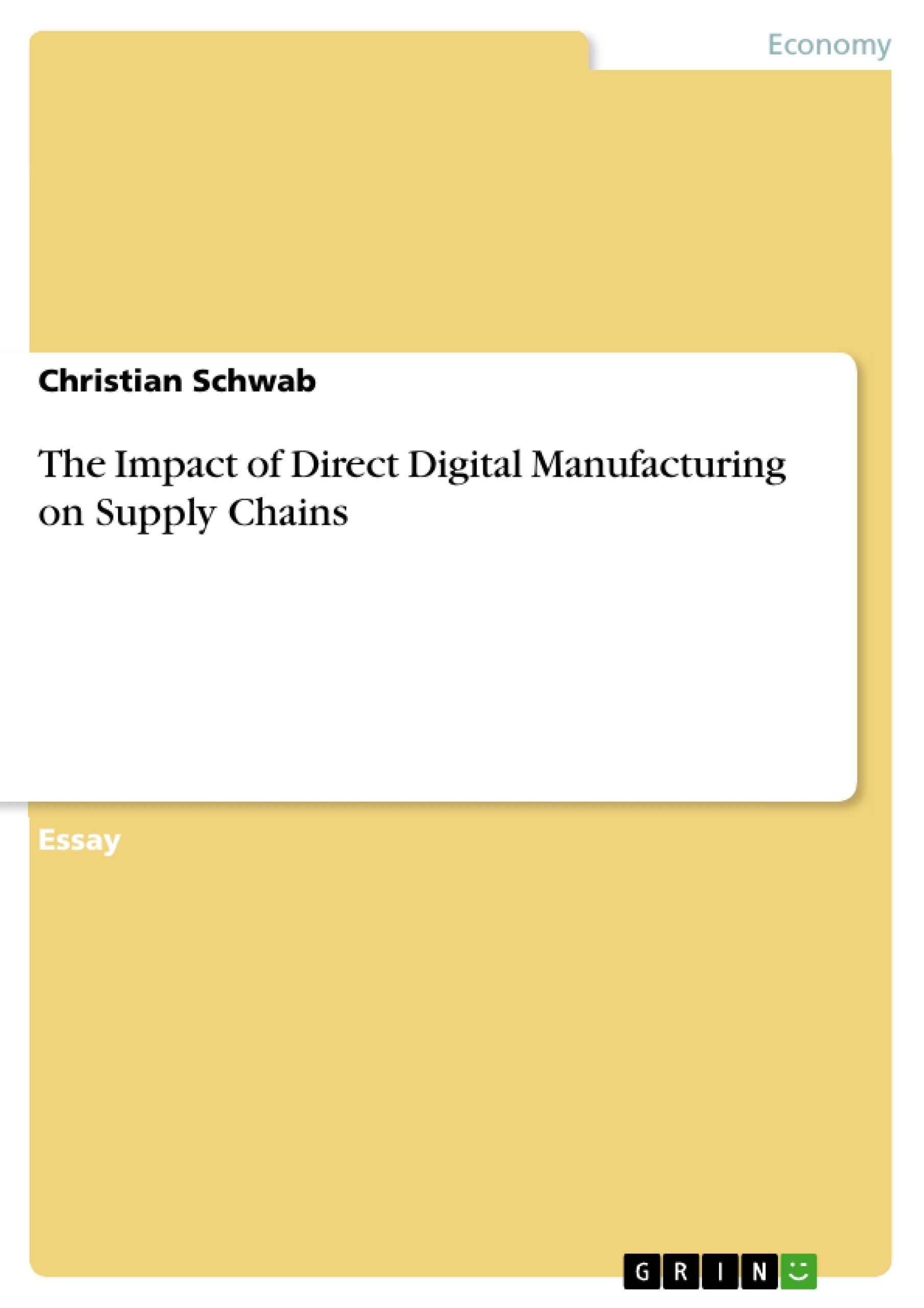Companies that will be leaders in futures business are those companies that achieved cost leadership and service leadership. Therefore companies are looking for supply chain solutions that help to increase the value to the customer while reducing costs in order to get competitive advantages.
One solution could be the technology of DDM, where customized products can be printed at the point of demand. DDM has “the power to change business radically and have significant positive or negative effects for an industry or single company”
At first this report will illustrate the impact of DDM on supply chains by using supply chain concepts. After that approaches to gain competitive advantage for a global logistics company will be advised before ending with a conclusion.
Inhaltsverzeichnis (Table of Contents)
- 1. Introduction
- 2. Impact of Direct Digital Manufacturing on Supply Chains
- 2.1. Supply-Chain-Design
- 2.2. Impact of DDM on lean concepts
- 2.3. Impact of DDM on agile concepts
- 2.4. Impact of DDM on leagile and postponement concepts
- 3. Competitive-Advantages
- 4. Conclusion
Zielsetzung und Themenschwerpunkte (Objectives and Key Themes)
This report aims to analyze the impact of Direct Digital Manufacturing (DDM) on supply chains and explore potential competitive advantages for global logistics companies. It examines the influence of DDM on key supply chain concepts, including lean, agile, and leagile principles, and investigates how DDM can change the traditional decoupling-point in supply chains.
- Impact of DDM on supply chain concepts (lean, agile, leagile)
- The role of DDM in transforming the decoupling-point
- Competitive advantages for logistics companies in a DDM environment
- The potential for mixed factories combining traditional and DDM manufacturing
- The implications of DDM for inventory management and logistics operations
Zusammenfassung der Kapitel (Chapter Summaries)
Chapter 1: Introduction
The report begins by highlighting the importance of achieving cost and service leadership in today's business environment. It introduces DDM as a potential solution for enhancing customer value and reducing costs, emphasizing its potential to radically transform businesses and supply chains.
Chapter 2: Impact of Direct Digital Manufacturing on Supply Chains
This chapter explores the influence of DDM on different supply chain concepts, starting with the design of supply chains based on the nature of demand (functional or innovative). It then delves into the impact of DDM on lean, agile, and leagile concepts, highlighting how DDM can contribute to leaner supply chains while simultaneously enhancing agility.
Chapter 2.1: Supply-Chain-Design
This section introduces various supply chain concepts, including lean, agile, and postponement, which are designed to address different types of demand and products.
Chapter 2.2: Impact of DDM on lean concepts
The report explains how DDM can impact the lean concept by eliminating waste and increasing throughput. It highlights the advantages of DDM in reducing logistics costs, lead times, inventories, and the need for transportation and warehousing.
Chapter 2.3: Impact of DDM on agile concepts
This section focuses on DDM's contribution to agile principles, showcasing its ability to respond quickly to changes in demand and supply. It emphasizes the potential for rapid production of small and medium-sized components through DDM.
Chapter 2.4: Impact of DDM on leagile and postponement concepts
The chapter discusses the leagile concept, which combines lean and agile principles, and explores how DDM can render leagile concepts unnecessary. It introduces the concept of DDM as the new decoupling-point in supply chains, explaining how it enables mass customization and geographical postponement.
Chapter 3: Competitive-Advantages
This chapter examines potential competitive advantages for logistics companies in a DDM environment. It suggests that logistics companies could focus on handling fast-moving parts, while utilizing DDM for slow-moving parts. This strategy is based on the idea of continuing to use traditional manufacturing approaches for some components while embracing DDM for others, reducing investment in DDM capacity.
Schlüsselwörter (Keywords)
Direct Digital Manufacturing (DDM), supply chain management, lean concepts, agile concepts, leagile concepts, postponement, decoupling-point, competitive advantage, inventory management, logistics, Pareto-Rule, mass customization, geographical postponement, mixed factories.
- Citar trabajo
- Christian Schwab (Autor), 2011, The Impact of Direct Digital Manufacturing on Supply Chains, Múnich, GRIN Verlag, https://www.grin.com/document/198725



